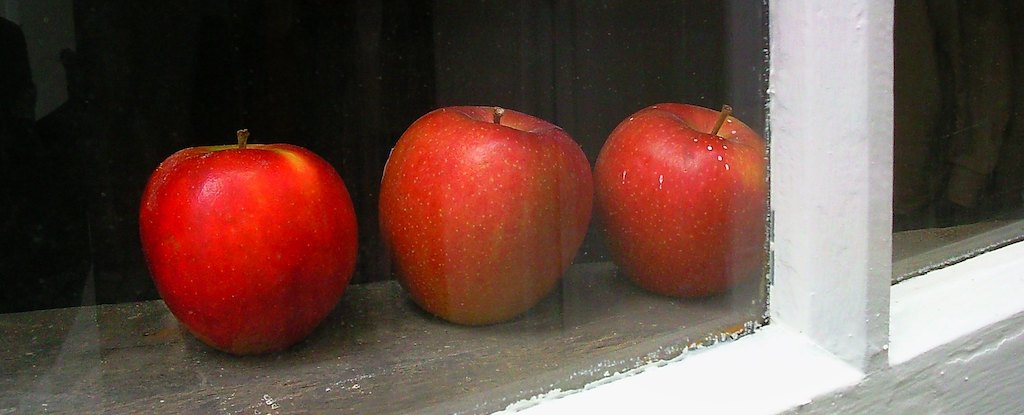From ScienceAlert, January 3:

Quick, how many apples are in the photo above?
It's easy to see there are three, but thanks to a distinct processing mechanism in your brain, it might have been even easier than you realize.According to a new study, the human brain has two separate ways of processing numbers of things: one system for quantities of four or fewer, and another system for five and up.
Scientists have known for a long time that people respond differently when asked to quickly discern quantities above or below this threshold, but until now it wasn't clear if this was really evidence of two discrete neural mechanisms, the study's authors explain.
Presented with four or fewer objects, humans can usually identify the sum at first glance, without counting. And we're almost always right.
This ability is known as "subitizing," a term coined by psychologists last century, and it's different from both counting and estimating. It refers to an uncanny sense of immediately knowing how many things you're looking at, with no tallying or guessing required.
While we can easily subitize quantities up to four, however, the ability disappears when we're looking at five or more things. If asked to instantly quantify a group of seven apples, for example, we tend to hesitate and estimate, taking slightly longer to respond and still providing less precise answers....
....MUCH MORE
The other handy way to process the information contained in the photo is to look at the URL for the pic:
https://www.sciencealert.com/images/2023/10/three-apples.jpg
but I digress.